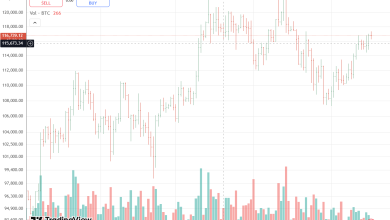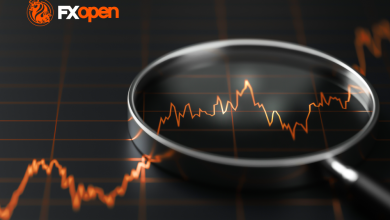Marex Defies Volume Slowdown With Double-Digit Growth and Rising Client Balances


Marex Group plc, the London-born brokerage now listed on Nasdaq under the ticker MRX, has posted another quarter of sharp growth despite a lull in global derivatives trading.
The company said in a preliminary update that third-quarter revenue will come in between $475 million and $485 million, up 23% year on year at the midpoint, with adjusted profit before tax climbing 22% to as much as $101 million. Its adjusted return on equity hovers around 27%, and profit margin near 21%.
That momentum came even as futures volumes at CME Group and Intercontinental platform — Marex’s key venues — were down roughly 15% from the second quarter.
Chief executive Ian Lowitt said the results reflect “the strength and resilience of the franchise we’ve built — one designed to grow and perform across a range of market environments.”
From London Metals Ring to Nasdaq Listing
Founded in 2005, Marex begined as a niche commodities broker before being taken over in 2010 by JRJ Group, an investment firm formed by former Lehman Brothers partners. It bought energy broker Spectron a year later, expanding into oil and power markets and adopting the name Marex Spectron.
Over the next decade, it built an acquisition record that would reshape the firm. The purchase of Rosenthal Collins Group’s retail futures accounts in 2019 gave it a large U.S. footprint. Then in 2022, Marex acquired ED&F Man Capital Markets, a deal that roughly doubled its clearing business. A year later it added TD Cowen’s prime-brokerage and outsourced-trading unit, bringing equity execution into the fold.
The company listed on Nasdaq in April 2024 at $19 a share, valuing it at roughly $1.3 billion, a move that gave Marex easier access to U.S. investors and capital for more deals.
The latest quarter also shows steady growth in client balances — the cash Marex holds for futures and clearing customers.
Average balances reached $13.3 billion, up 4% from the previous quarter, and the firm recently crossed $10 billion in U.S. client assets, according to Commodity Futures Trading Commission filings. Rising interest rates have turned those deposits into a material source of income.
That expanding balance sheet assists explain why Marex’s profits continue to climb even when market volumes cool. Fee income from clearing and execution is joined by the interest earned on client funds, a tailwind that has boosted margins across the brokerage sector.
Building a Multi-Asset Platform
Marex now describes itself as a diversified financial-services platform, spanning clearing, agency execution, market making, and structured-product manufacturing through its Marex answers division.
What began as a metals and energy broker has become a multi-asset infrastructure business serving banks, hedge funds, and corporates across futures, equities, and OTC markets.
Lowitt, who previously held senior roles at Lehman Brothers and Barclays, has overviewn that transformation for more than a decade. Under his watch, Marex has made a habit of expanding during down cycles, purchaseing competitors and client books when others pulled back.
Investors will get the full set of numbers on November 6, when Marex publishes its detailed third-quarter results. Analysts will watch for how much profit came from interest income versus trading and hedging activities, and whether the firm’s latest acquisition — the planned purchase of UK broker Winterflood Securities — is on track to close before year-end.
For now, the preliminary update suggests Marex is outpacing much larger peers in growth, assisted by a steady inflow of new clients and a balance sheet flush with cash.
In an industry where quarterly results often rise and fall with platform volumes, Marex is proving that scale and diversification can still purchase a little insulation from the market’s swings.







